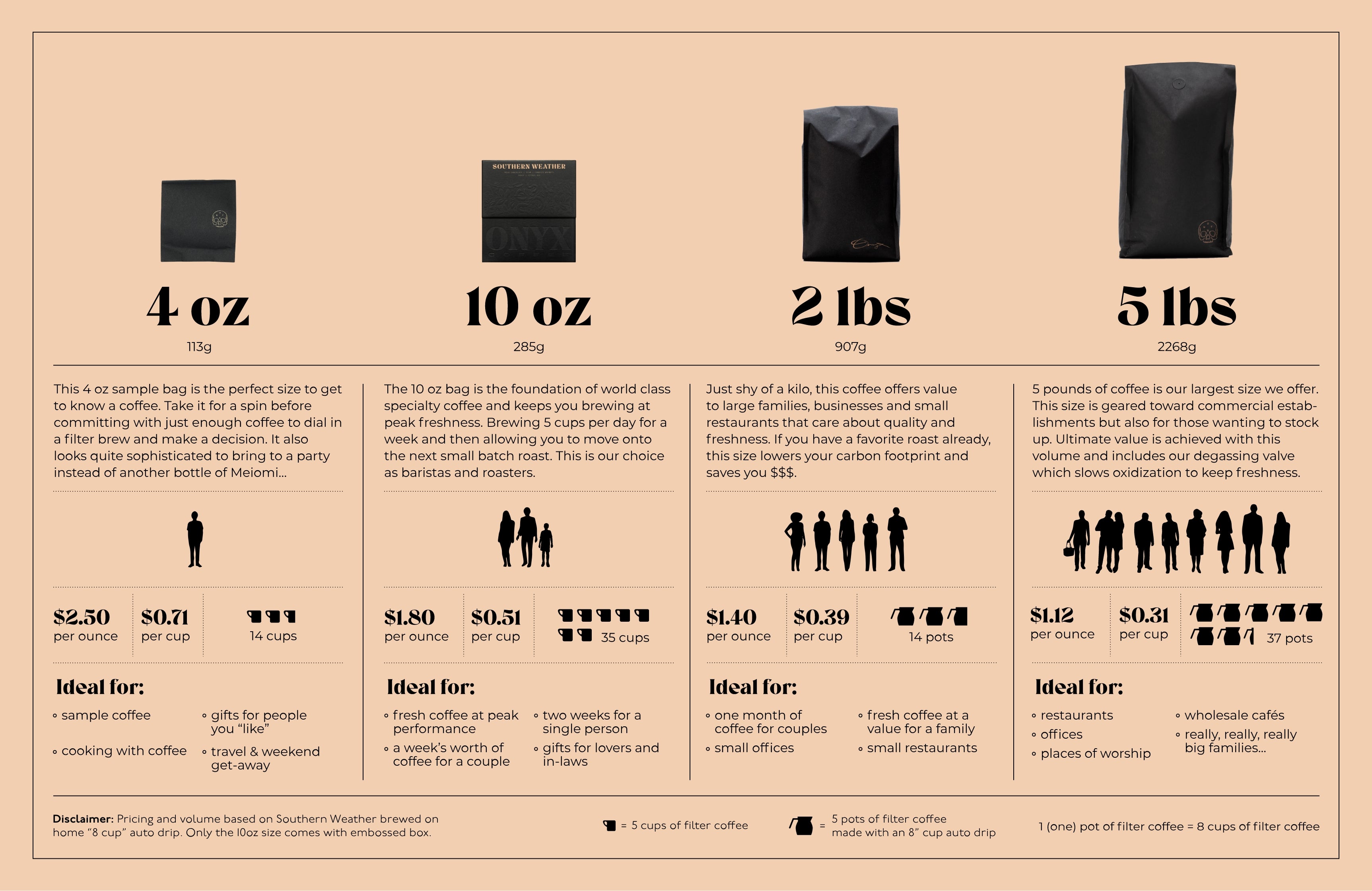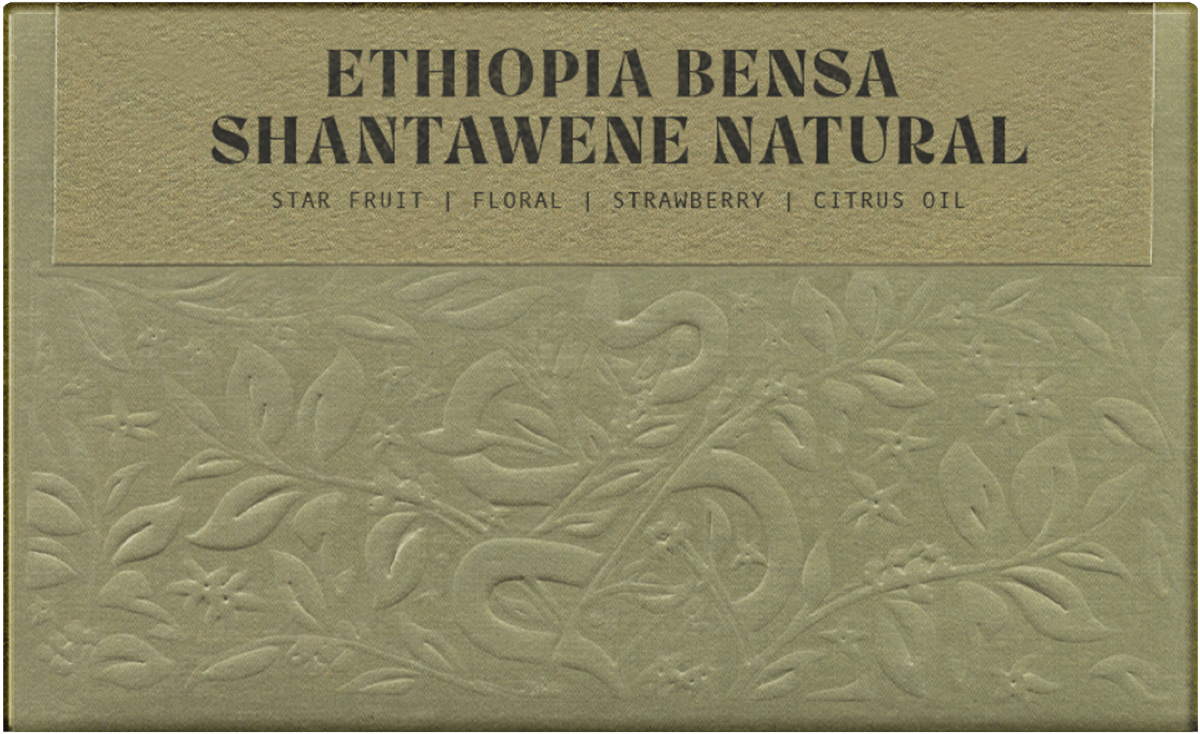Story
SHANTAWENE RELATIONSHIP By Catalyst Trade
“We have worked for several years now with the producers of Shantawene, our first season beginning in 2015. Shantawene village is situated between the village of Bombe and the Bombe mountain. The producers are part of a member organization consisting of 667 producers in various parts of the mountain range, which also include producers from Bombe and Keramo. We’ve worked with this group since before it was officially founded (more on that below). For the last two years, these member producers deliver their coffee cherries to the Bombe site Abore Washing Station for processing to our specifications. We always anticipate every lot from Shantawene each year, as they are to us the quintessential Ethiopian coffee - full of dynamic herbals and sparkling acidity, with articulate fruits. This coffee continues to stand out as a team favorite on the cupping table. Like Keramo, it is a dense coffee, with heaviest concentrations comprising the smaller screen sizes (the majority of the coffee screen sizes at 14 and 15). The larger screen sizes are a treat for the very few roasters who get them. In screens 16 and 17, we find heavy concentrations of fruit juice and lovely tea-like subtleties that the smaller screen sizes tend to hide with heavy handed perfumes.
Prior to the 2017/18 harvest, this producing group delivered coffee cherries to a different washing station nearby, called Shantawene washing station, where we first encountered the coffees and purchased them as mixed lots. Up until the 2017/2018 harvest, all coffees from Bombe, Keramo and Shantawene villages were processed together and sold under the name of Shantawene. We were noticing different cup dynamics from the cherries that came from different areas, and eventually began to isolate coffees by village. This led to the move to Bombe site washing station and getting even more isolation in the lots. For the past couple seasons, all producers we work with from Shantawene, Bombe and Keramo all deliver cherries to the more centralized Bombe site Abore Washing Station.” - Catalyst Trade
NATURAL PROCESSED COFFEES
Naturals are beautiful…Okay, natural coffees are beautiful when done properly and are pretty much the worst thing ever when not. Natural processing or dry processing refers to the act of drying and fermenting coffee inside the cherry. This means the coffee cherries are picked from the tree and placed on drying beds or on the ground in some cases. They are dried in the sun until they have 12% moisture content or so and then are hulled to remove the dry husk of the fruit. “Naturally,” they exhibit fruit-forward characteristics and have a good chance of tasting “fermenty,” which is usually a taboo in Specialty Coffee. However, with advanced technique in picking and drying, high-quality naturals are being produced, and the cup quality and taste profiles are astoundingly good. We have long promoted alternative processing methods, and naturals are at the top of that list. This Hambela coffee is one of those reasons we do. Fresh berries, vibrant lime, and a sweet, silky mouthfeel is just part of what makes this coffee so indulgent. Add jasmine tea, bergamot, and tropical overtones in both aromatics and flavor. This coffee will change the way you look at black coffee and may just convert those who don’t drink it currently. Clean, high-quality naturals can be a perspective-changing cup.
SCREEN SIZE
We have been purchasing screen size separations from Catalyst since they began. Since coffee is an organic product, the seeds of the cherries tend to have a pretty wide variance in size (and shape), and a natural part of coffee production is separating coffee into screen sizes. Mills will separate the coffee to a size 15/16 screen for exporting, and others are either sold as a different grade or sold off for consumption outside of the specialty market. It is common practice to separate and market screen sizes as grades, rather than only by size. Alongside Catalyst's other strict quality standards and practices, we see screen separations nearly as separate coffees; these separations will have a wholly different taste profile.
SCREEN SIZE ISOLATION by Catalyst Trade
Though it is very common in other countries, we don't know anyone else in Ethiopia who isolates screen sizes. To do so, we must be very careful, or we will lose an enormous amount of coffee. Zele works with the export warehouse staff to calibrate the flow of coffee and ensure each size is clearly separate. The decision of whether or not to isolate screen sizes is also quite labor-intensive: we hand-screen- sort and then cup each screen size several times to determine the different qualities and characteristics. In general, smaller screen sizes tend to be more floral and herbal, while larger screen sizes tend to be more fruit-heavy and juicy.
PRODUCER PREMIUMS by Catalyst Trade
A benefit of the new legislation in Ethiopia allows us to share profits with producers directly; additionally, our premiums are reinforced by the 2017 CAFE Practices certification of the Bombe/Abore site. As part of the certification, a second payment is given to producers following the final sale and shipment of all coffees.
In partnering with Abore, Catalyst Trade sought to seize the opportunity to participate in this direct payment structure with producers, and we pay additional levels of premiums on all coffees we purchase. We pay a premium for high-quality cherry acquisition and for implementing float tanks; another for implementation of our processing protocols, which include meticulous sorting and specialized experiments; and an additional premium for coffees exceeding an expected minimum cupping score. In addition to these premiums, we pay daily premiums at the dry mill, when we are processing all of our lots. This amounts to tripling the daily wages of laborers while we are working together.



